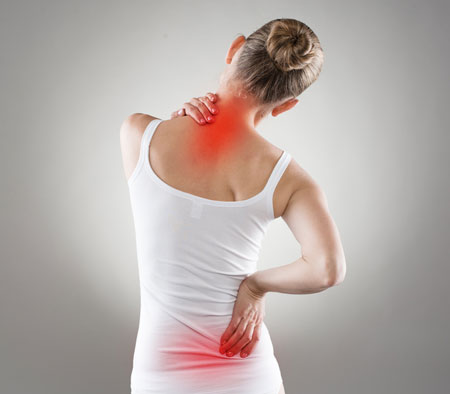 When talking about physical pain, Merriam-Webster.com defines it as:
When talking about physical pain, Merriam-Webster.com defines it as:
- Usually localized physical suffering associated with bodily disorder (such as a disease or an injury)
- A basic bodily sensation induced by a noxious stimulus, received by naked nerve endings, characterized by physical discomfort (such as pricking, throbbing, or aching), and typically leading to evasive action, for example, the pain of bee stings
However you define it, and however you experience it, pain is usually something we prefer to avoid, notwithstanding the old joke that pain means you ain’t dead yet.
Patients at our Kanata Chiropractic clinic occasionally complain of pain in their neck or low back. Sometimes, it’s the result of obvious trauma – a car accident, a rough tackle or hit during a sport, that one lift too far at the gym.
But most of the time, pain doesn’t have such an obvious cause. It’s the little things that add up over time that do it to us – repetitive strain injuries from work, too much mobile screen time with bad posture, poor ergonomics at a desk.
These things can add up and affect any of us, at any age, regardless of our level of physical fitness.
Life adds up – a true story
One of our patients, a 46-year-old woman, is a perfect example.
She is physically fit and active. She works out several times a week, taking classes at her local gym for pilates, cardio, and strength training.
She recently participated for the first time in the annual kilt run in Perth, 45 minutes southwest of here. Running the eight kilometers wasn’t enough – she and her husband signed up for the warrior run – carry a sword and shield for the entire course, and also do traditional highland games events like toss a caber, shotput a stone, and throw a sledge hammer.
She also runs her own business, providing a helping hand to those who need it in the community.
Given the time of year, it’s not surprising this has included over the past couple of months a lot of strenuous gardening work.
All of which has left her with, you guessed it, pain.
She has lower back pain when she gets up in the morning. Shoulder and neck pain, which is aggravated by the fact that she also has temporomandibular joint (TMJ) disorder that requires her to wear a mouth appliance when she sleeps.
The cause of her pain is not one thing, but an accumulation of many things over the past few months. This is only to be expected – she’s only human.
The healthy way to deal with pain
Her time in the gym is conditioning and strengthening her body to be better able to handle the kilt run, the client work, and all the other chores around the house that have her bending and stooping and reaching and twisting.
In fact, she says her weight training class often helps her stretch out and feel better after a couple long days of client work.
So, imagine just how much more the aches and strains of daily living and work would weigh on her if she wasn’t going to the gym regularly.
Don’t skimp on your body’s maintenance
What we do for you here in the clinic is extremely important to your overall spinal health, but we also recommend regular exercise and stretching through the rest of the week, to offset all those trials of daily living.
Such regular maintenance on your body is far better for your long-term health than a sedentary lifestyle and a reliance on pain medications (with their risk of side effects) that only address symptoms but don’t treat root cause.
